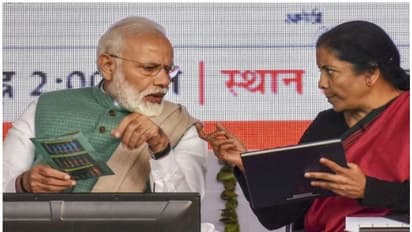Indian economy poised for further growth in 2023; Here's how

Synopsis
The impact of global headwinds, which are expected to have a bearing on the country's exports in the months to come, will be neutralised by a positive growth trajectory and improved fundamentals.
Having recovered from the Covid-induced downturn during 2022, the Indian economy is poised for further improvement in the coming quarters even as risks emanating from elevated inflation, strengthening dollar, and geopolitical tensions will continue.
The impact of global headwinds, which are expected to have a bearing on the country's exports in the months to come, will be neutralised by a positive growth trajectory and improved fundamentals
Also Read: 2023 to be tougher year for global economy, warns IMF Chief Kristaline Georgieva
The challenges before the Reserve Bank of India and the Narendra Modi government in 2023 would be to check the declining value of the rupee against the US dollar, promote private investment and growth, and arrest inflation.
To note, India recorded a growth of 9.7 per cent in the first half of 2022-23 (April-September), as against 5.6 per cent in Indonesia, 3.4 per cent in the UK, 2.2 per cent in China and 1.8 per cent in the United States.
According to former Niti Aayog vice-chairman and noted economist Arvind Panagariya, "From India's viewpoint, the worst is probably behind us in terms of headwinds originating abroad. Overall, I still expect us to have a growth rate exceeding 7 per cent by the end of the current fiscal year. Assuming the forthcoming Budget does not have any negative surprises, the 7 per cent growth rate should sustain next year."
Persistent high inflation was the biggest problem the economy faced. It remained above the RBI's comfort level for most of the year. In fact, the RBI had to explain through a report to the central government on why it failed to check inflation.
Also read: India's manufacturing PMI hits 13-month high in December on rise in new orders; check details
The depreciating rupee against the US Dollar was another challenge for policymakers. It made imports costlier and, in turn, impacted the country's current account deficit. Experts believe that the rupee will continue to remain under pressure in the coming months.
As far as exports are concerned, things may not be rosy either in 2023, with recession persisting in key western markets and the geo-political crisis due to the war in Eastern Europe.
Amid global economic turmoil, later months of 2022 witnessed a lot of job cuts in the technology segment. The New Year is expected to bring a mixed bag of opportunities for job aspirants. Experts note that telecom and services-oriented sectors are expected to accelerate hiring.
Andrew Wood, Director, Sovereign & International Public Finance Ratings, S&P Global Ratings, said India benefits from a period of buoyant revenues and rapid nominal GDP growth.
"Key debt metrics, including the debt to GDP ratio and the government's interest burden, are stabilising due to these dynamics. Even though this tailwind will fade heading into Financial Year 2023-24, we still expect India to achieve solid growth next year," he said.
With agency inputs
Stay updated with all the latest Business News, including market trends, Share Market News, stock updates, taxation, IPOs, banking, finance, real estate, savings, and investments. Track daily Gold Price changes, updates on DA Hike, and the latest developments on the 8th Pay Commission. Get in-depth analysis, expert opinions, and real-time updates to make informed financial decisions. Download the Asianet News Official App from the Android Play Store and iPhone App Store to stay ahead in business.